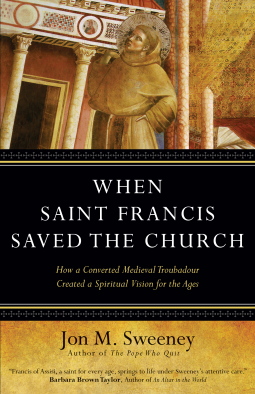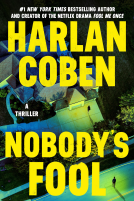
When Saint Francis Saved the Church
How a Converted Medieval Troubadour Created a Spiritual Vision for the Ages
by Jon M. Sweeney
This title was previously available on NetGalley and is now archived.
Send NetGalley books directly to your Kindle or Kindle app
1
To read on a Kindle or Kindle app, please add kindle@netgalley.com as an approved email address to receive files in your Amazon account. Click here for step-by-step instructions.
2
Also find your Kindle email address within your Amazon account, and enter it here.
Pub Date Sep 08 2014 | Archive Date Oct 02 2014
Description
In When Saint Francis Saved the Church, popular historian Jon Sweeney presents an intriguing portrait of Francis beyond the readily familiar stories and images. In the tradition of Thomas Cahill’s How the Irish Saved Civilization, Sweeney reveals how the saint became a hinge in the history of the Christian faith and shows how in just fourteen years—from 1205 to 1219—the unconventional and stumbling wisdom of a converted troubadour changed the Church. Sweeney outlines Francis’s revolutionary approach to friendship, “the other” (people at the margins), poverty, spirituality, care (for people, creatures, and the natural world), and death. This vibrant book presents the unsullied life and message of Francis in its essential details, offering a sweeping, informative, remarkable look at how Francis and his movement quite literally saved the Christian faith—and continues to offer a spiritual vision with contemporary relevance.
Advance Praise
“After
trying to follow Christ as a Franciscan for almost fifty years, I can
honestly say this is an exciting, intelligent, and faithful
understanding of Francis of Assisi—for our time and for all time! Read,
and find hope!”
Richard Rohr, O.F.M.
Center for Action and Contemplation Albuquerque, New Mexico
“Jon
Sweeney is good at many things, but he is a master at retrieving the
treasure of the Christian past and restoring it to currency for the
Christian present. In this book, he transcends even those categories.
Francis of Assisi, a saint for every age, springs to life under
Sweeney’s attentive care.”
Barbara Brown Taylor
Author of An Altar in the World
Bert Ghezzi
Author of Voices of the Saints
“Once again with his reader-friendly style, practical advice, and sense that history is really present in its impact on our daily lives, Jon Sweeney brings St. Francis into the twenty-first century as a friend and model we can delight in and trust. In six simple ways, Sweeney’s Francis shows us how to transform our lives and give them joy and meaning. This Francis is a Francis that readers may feel they are meeting anew and finding even more relevant in their lives.”
Murray Bodo, O.F.M.
Author of The Way of St. Francis
“Jon Sweeney applies popular history to a man who changed history, St. Francis of Assisi. Deeply familiar with the Franciscan sources and writing in a very accessible style, Sweeney points to Pope Francis’s inspiration. I like this book!”
John Feister
Editor-in-Chief of St. Anthony Messenger
“This well-informed meditation on the life of St. Francis is a delight to read. Jon Sweeney’s careful and timely retelling of Francis’s story deepens our understanding of why a twenty-first-century pope took the saint’s name—and gives us hope for the future of the Church.”
Paul Moses
Author of The Saint and the Sultan
Marketing Plan
No Marketing Info Available
No Marketing Info Available
Available Editions
| EDITION | Hardcover |
| ISBN | 9781594714863 |
| PRICE | $22.00 (USD) |
Featured Reviews
 Nicolás C, Educator
Nicolás C, Educator
Reading the book entitled "When Saint Francis Saved the Church", written by Jon M. Sweeney, was, in my opinion, a very pleasant, refreshing and even inspiring experience. Granted, the subject of the book, a fresh exploration of one of the most beloved figures -as he deserves to be- in Christianity, saint Francis of Assisi, "Il Poverello", easily lends itself to that.
The book is quite interesting, examining saint Francis even in a critical way, not burdened by preconceptions, and must be praised insofar as it is not merely a descriptive work, containing the own insights and interpretations of the author, comparing saint Francis and his attitudes and life to other Christian and non-Christian figures and ideals or beliefs.
For instance, despite the great admiration of the author for saint Francis, he posits how each one has a unique vocation, and (rightly so) compares saint Francis to pope Francis, one pope whom I truly admite and love.
The book will make the critical reader, or the reader who is open to it, questions things about his life and even desire to improve, but not for the sake of a spiritual "reward", but rather out of a desire to love truly, which as the author says is the greatest miracle.
I wholeheartedly recommend this book: critical, inspiring, fresh, and pleasant to read. I am glad that I had to review it.
This highly readable look at the life and person of St. Francis of Assisi opens the door into history in a way that is engaging and relevant. One thing will become clear to all who read this: this medieval friar has as much to say to us today as he ever has. Jon Sweeney is a masterful storyteller that brings this history to life.
 Kevin M, Media/Journalist
Kevin M, Media/Journalist
This is a new work of popular history in the style of Thomas Cahill’s bestselling “How the Irish Saved Civilization”. Author Jon Sweeney presents an account of the beloved Saint Frances of Assisi as a hinge in the history of the Christian faith, who in just fourteen years – from 1205 to 1219 – transformed the Church and continues to remain an inspiration in our own time, hence the book’s subtitle, “How a Converted Medieval Troubadour Created a Spiritual Vision for the Ages”.
The author’s numerous previous books include several on St Francis and Franciscan spirituality, and he was translator of the saint’s own writings in “Francis of Assisi in His Own Words: The Essential Writings” (2013).
“...there are signal figures who are catalysts for rapid change. They are worth focusing on, not only because examining their lives closely helps us understand a previous era, but because understanding them can tell us something important about who we are today. Francis of Assisi was such a figure: extraordinary, seemingly unlike and inaccessible to us normal people. Yet studying his life offers us a way to understand ourselves and our place on this planet better. Francis originated a spirit that still animates us, nearly eight hundred years after his death.”
Sweeney focuses on six key areas in which he believes Francis’s life and message most influentially returned the Church to the original Gospel teachings and mission of Jesus.
Firstly, Francis was radical in the way be crossed the clear and enforced lines of gender, religion and status in place in his culture and time. Secondly, Francis demonstrated a profound respect for both people and other creatures that were discarded or even demonised. By treating people as equals he changed the nature of religious life.
Thirdly, Francis also embraced poverty in a profound way. He didn’t see poverty as a virtue in and of itself, but demonstrated how being poor was a sure way to understand the message of Jesus. Fourthly, Francis valued spirituality higher than theological understanding, and his personal spiritual life drew followers to him and eclipsed that of the official church leaders of his time.
Fifthly, Francis’s care not just for people and creatures, but also for all of creation, no matter know seemingly insignificant, has justly made him a saint of the environmental movement and shows just how far ahead of his time he was.
Finally, Francis embraced death in a way completely at odds with the macabre ways of his culture. His acceptance of death as an important part of living offered a new understanding to Christian life.
In this fine and accessible book, Sweeney also poses the question, “Is it too bold to suggest that another Francis may just be saving the Church again in the twenty-first century?”. What might the example of Saint Francis offer Pope Francis in his mission to renew the Church?
 Tanya M, Reviewer
Tanya M, Reviewer
I decided that I didn’t know enough about the great Christian saints of the past, and so I braced myself for an informative, but dry, academic read, as so many biographies are. I was delighted to discover that not only was it informative, blowing apart the internal picture I had of St Francis as a cloistered monk who spent all his time with animals instead of people, but it was witty, lively and felt like a real page-turner.
Rather than a strictly chronological structure, it highlights several aspects of his unique ministry: his emphasis on people and friendship; embracing the other; his value of poverty; a distinctive spirituality; a love for creation and animals; and embracing death.
The real strength of this book is that the author makes all of the issues that St Francis dealt with sound so current, so it has a prophetic edge. I found it fascinating, for example, to see how many similarities there are between the current Pope and the original St Francis, and why it was so revolutionary for a Pope to name himself after St Francis. The picture that Jon Sweeney paints of St Francis is a fascinating one: a feminist, a subversive and anti-establishment pioneer, a mystic, a medieval troubadour, a popular and charismatic figure, a true disciple of Christ. At times, he does almost slip into gushing about Pope Francis, but as even Time Magazine has become a fan of the Pope, he is to be forgiven for this enthusiasm. By the end of the book I felt as though I knew St Francis, and would have liked to have had him as a friend. I kept on underlining quotes from this book: it is extremely tweetable, with countless pithy insights about St Francis and the church. It is not didactic or sentimental, but is sympathetic to a Christian worldview, and as such is suitable for people of all faiths or none.
This is a book I keep talking about, and I am recommending this to everyone I know as a really fascinating book, not just for busting the myths of the saint, and reclaiming St Francis as a renegade revolutionary, but also for drawing the parallels between then and now in such a readable way.
Some favourite quotes:
“‘Okay, so [this book] is history. But it’s also about how well-meaning Christians almost killed the faith eight hundred years ago.’”
“We may think of saints as aloof or mostly alone with God, but not this one. He became a saint through friendship.”
“He saw the ‘sacred’ in everyone and everything.”
“For Francis there were no ‘others’.”
“Francis has never been Rome’s favourite religious leader. Indeed, he was a threat to the power of the Church.”
 Pat L, Reviewer
Pat L, Reviewer
Sweeney is looking at Saint Francis and the way he treated people and treated going to church every day. That the way he looked at everyone and everything as from God. He shows how now our new Pope Francis has taken on his name and why. Why going to mass every day and saying mass is important to him. As Saint Francis took in lepers and helped them Pope Francis is doing the same with the people that others think have no business being part of our church. He takes the approach as Saint Francis in that everyone is God’s creatures and therefore will be treated as such. This and Mas are two of the examples. There are many more as well as the people that thought what Saint Francis was doing was wrong, especially his father, and how the Pope is being looked at the same way inside and outside of the church. A very good and informative book.
Readers who liked this book also liked:
Pamela Samuels Young; Dwayne Alexander Smith
Multicultural Interest, Mystery & Thrillers, Romance
Silvia Moreno-Garcia
Historical Fiction, Literary Fiction, Sci Fi & Fantasy













